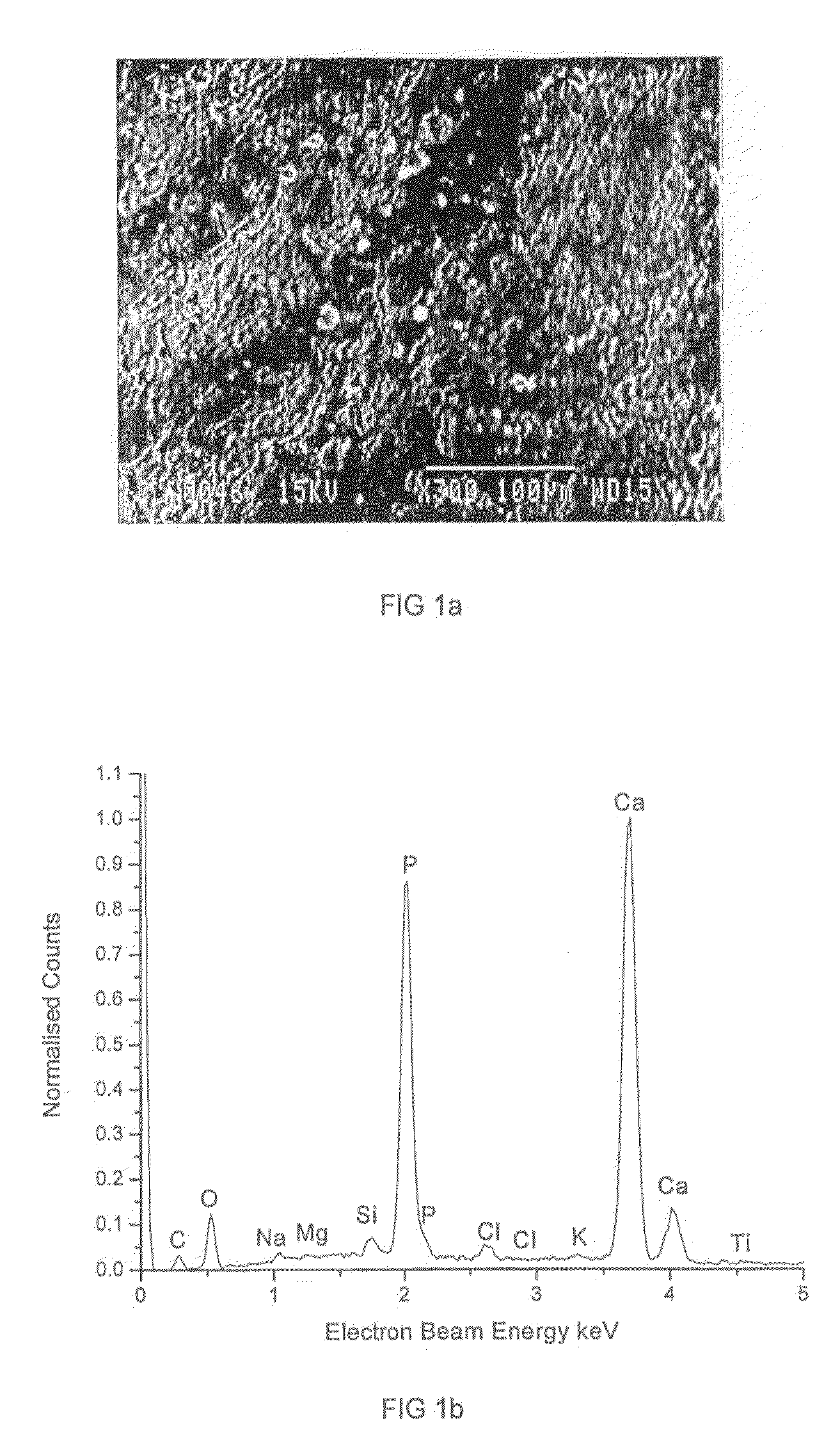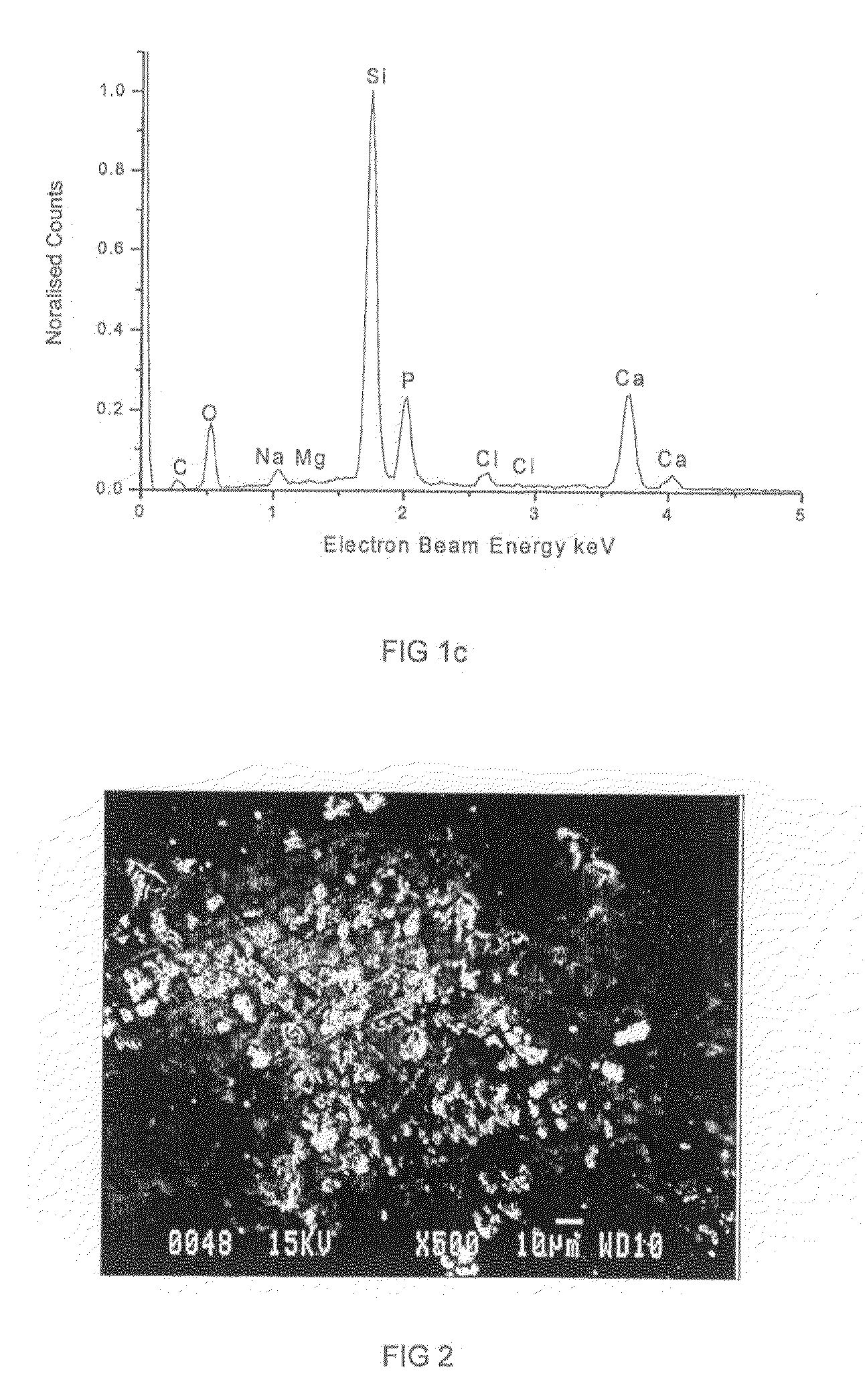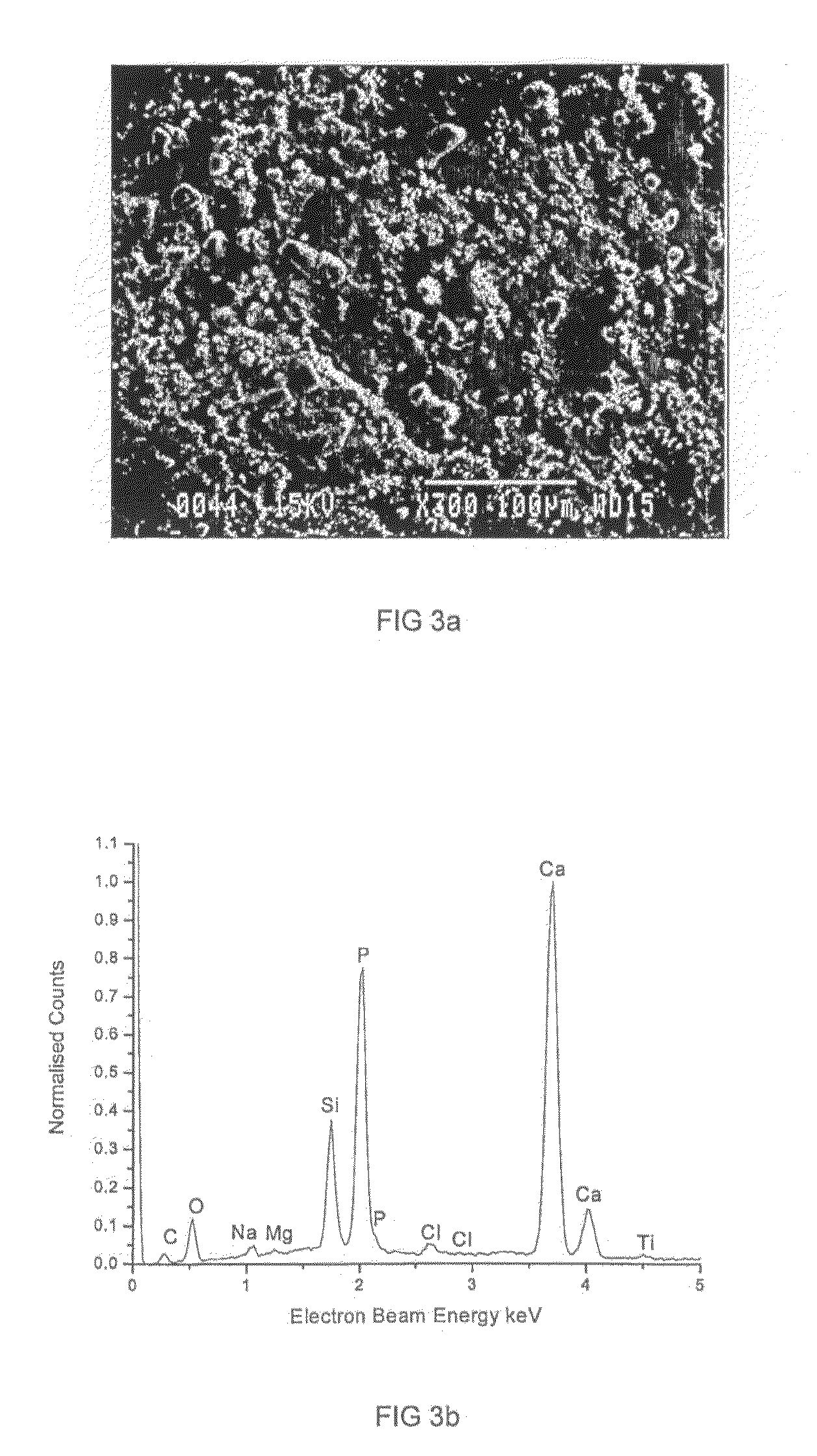Oral Hygiene Compositions
a technology of oral hygiene and compositions, applied in the field of oral hygiene compositions, can solve the problems of affecting the appearance of the mouth, affecting the health of the mouth, and abrasiveness of toothpaste, and achieve the effect of reducing plaque and reducing or inhibiting gingivitis
- Summary
- Abstract
- Description
- Claims
- Application Information
AI Technical Summary
Benefits of technology
Problems solved by technology
Method used
Image
Examples
example 1
Chemical Stability in Dentifrice Compositions
[0075]A bulk silicon wafer, coated with a layer of mesoporous silicon (650 nm thickness, 70 vol % porosity) was diced into segments which were half immersed into toothpastes having a pH of 6.1, 6.7 and 9.1 for a period of two days at 18° C. The results indicated that the mesoporous silicon was most stable in the toothpaste possessing a pH of 6.1 and least stable in the toothpaste possessing a pH of 9.1. At pH 6.1, little or no oxidation and / or corrosion of the mesoporous silicon had taken place.
example 2
Chemical Stability in Human Saliva
[0076]Human saliva was collected in the morning from ten healthy adult volunteers between the ages of 20 and 50. Each volunteer rinsed their mouth with tap water, swallowed, waited for approximately 30 seconds and then spat into a collecting vessel. The pooled liquid had a pH of 7.5+ / −0.1 at 26° C. Wafer segments containing a mesoporous (about 69 vol %) silicon layer of 0.63 μm + / −0.021 μm thickness were then incubated in 2 ml aliquots of saliva at 37° C. for periods ranging from 20 minutes to 5 hours. Cross sectional SEM images were taken of the mesoporous layer following exposure to the saliva in order to determine the change in thickness of the segments. After 20 minutes, the thickness had reduced to 0.61 μm; after 2 hours the thickness had reduced to 0.59 μm; and after 5 hours the thickness had reduced to 0.58 μm.
example 3
Adhesion to Oral Surfaces
[0077]Extracted human pre-molars of 20-24 mm length were subjected to a 1 minute brush with Colgate® Total toothpaste (pH 6.7 prior to use), with and without 10 wt % mesoporous silicon glitter particles. These were prepared from fully porous silicon membranes. The membranes were fabricated by anodising 5-15 milliohm silicon wafers in methanol / 40 wt % HF (1:1 by volume) electrolyte. The current density was modulated under computer control between 20 mA / cm−2 (9 second periods) and 125 mA / cm−2 (4.5 second periods) with 1 second periods in between where no current was applied. One hundred repeats generated vividly coloured layered structures with modulated porosity. Detachment of the membrane from the underlying non porous wafer was achieved by applying a final current pulse of 165 mA / cm−2 for 30 seconds. The air dried membranes were then mechanically crushed into glitter powder by using a pestle and mortar, and were used without subsequent classification or sie...
PUM
| Property | Measurement | Unit |
|---|---|---|
| mean particle size | aaaaa | aaaaa |
| grain size | aaaaa | aaaaa |
| current density | aaaaa | aaaaa |
Abstract
Description
Claims
Application Information
 Login to View More
Login to View More - R&D
- Intellectual Property
- Life Sciences
- Materials
- Tech Scout
- Unparalleled Data Quality
- Higher Quality Content
- 60% Fewer Hallucinations
Browse by: Latest US Patents, China's latest patents, Technical Efficacy Thesaurus, Application Domain, Technology Topic, Popular Technical Reports.
© 2025 PatSnap. All rights reserved.Legal|Privacy policy|Modern Slavery Act Transparency Statement|Sitemap|About US| Contact US: help@patsnap.com



